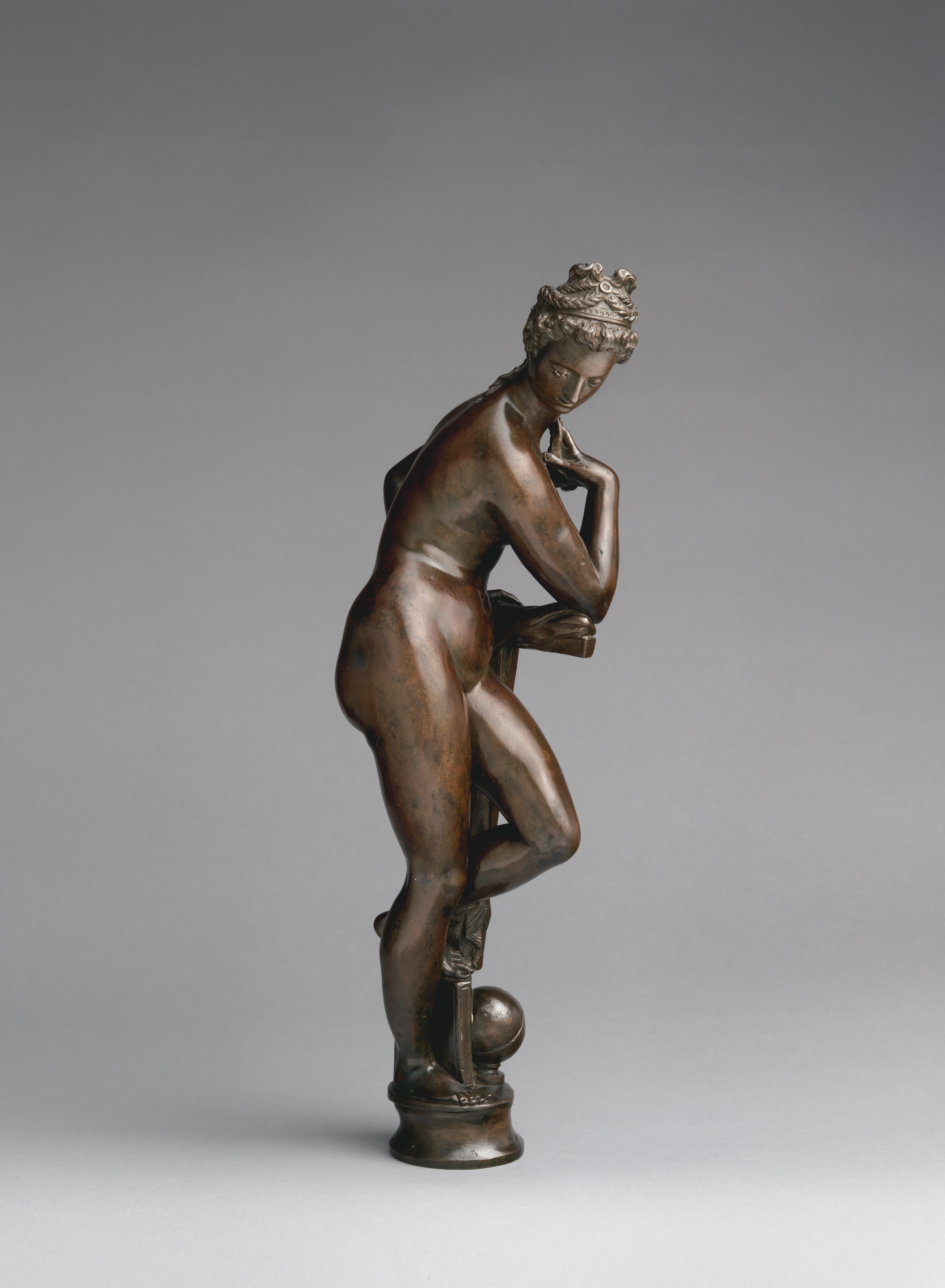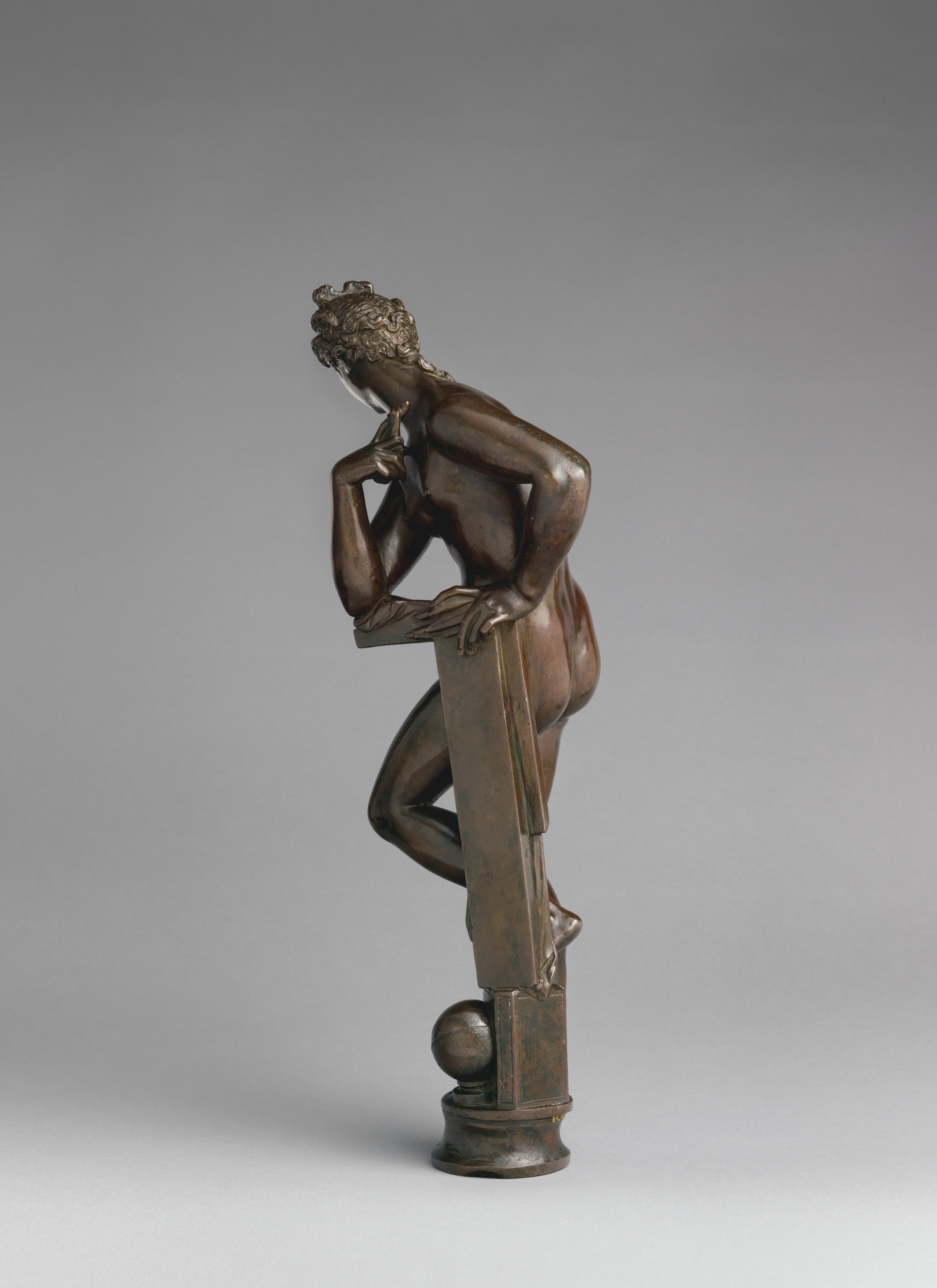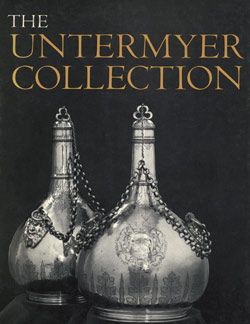Astronomy
After a model by Giambologna Netherlandish
The Astronomy was published in 1962 and illustrated alongside a bronze Architecture, both in the collection of Irwin Untermyer and both attributed to Giambologna. In photographs of Untermyer’s residence at 960 Fifth Avenue, the lovely twisting silhouette of the Astronomy dialogues with the contrapposto of the Architecture as they frame a display of bronzes placed on a long table, an installation that remained unaltered in spite of the changing interior decoration around them.[1] As is the case with many of Untermyer’s acquisitions, the Astronomy’s earlier provenance is unknown. It entered The Met in 1964. In 1977, James David Draper placed it among the “many replicas” of an invention by Giambologna, inserting it into a lineage that the scholar traced back to the signed cast today in Vienna (fig. 126a).
The statuette in the Kunsthistorisches Museum, in addition to having GIO BOLONGE inscribed on the strap running down its back, boasts an illustrious provenance: it appears continuously in the records of the imperial collection from the 1750 Inventar der Schatzkammer through 1891, the year it entered the Vienna museum. Beyond that, a variant of Giambologna’s invention, reprised in our Astronomy, is recorded in the 1609 inventory of the Salviati collection with an attribution to Antonio Susini. It was this cast that Pietro Tacca copied for a diplomatic gift of bronzes sent by Cosimo II to Henry, prince of Wales, in 1612.[2] Additionally, at the beginning of the seventeenth century, Markus Zäch counted among his possessions a version of the same subject, which was probably acquired by his father Sebastian during his stays in Florence in 1590 and 1592.[3]
Thus, when evaluating the bronze in Vienna and its compositional type, the figura serpentinata, most scholars have concluded that it was produced in an early phase of Giambologna’s career, during the mid-1570s, when he executed similar works. These include the Apollo for Francesco I’s studiolo in the Palazzo Vecchio, cast in 1573, and the Venus of the Grotticella in the Boboli Gardens, realized around 1575. However, recently Patricia Wengraf and Claudia Kryza-Gersch have identified a statuette in the Hill collection as an autograph example of the same composition that may predate the Vienna bronze. Characterized by limited cold work, unusually fresh modeling of details (for example, the treatment of the refined coiffure), and superb surface definition, the Hill lost-wax cast is consonant with works such as Giambologna’s striding Mars (Quentin Foundation Collection), the model for which he created before the mid-1570s, perhaps even in the late 1560s.[4]
Our Astronomy reproduces several details of the Hill prototype—the undulating braids of hair; the folds of fabric, a strip of which falls onto the support, under the figure’s feet—but simplifies the original into a much less vibrant whole. Radiographs reveal a thick-walled cast with longitudinal core wires running up through the legs and into the torso and head, features atypical of Giambologna and his followers.[5] Moreover, the molded base, cast integrally with the figure, is inconsistent with the master’s autograph works.
Kryza-Gersch has shed light on the iconographic identification of the composition. Early inventories record different names for analogous figures, ranging from “Venere Urania” in the Austrian records to the more generic “femmina della palla [ball]” for the Salviati bronze and its derivations by Tacca in the documents related to the Medici gift. More recent scholars have opted for “Astronomy,” thus modernizing the earliest reference to this compositional type as “Astrology” in the Zäch inventory.[6]
-TM
Footnotes
(For key to shortened references see bibliography in Allen, Italian Renaissance and Baroque Bronzes in The Metropolitan Museum of Art. NY: The Metropolitan Museum of Art, 2022.)
1. MMA Archives, Irwin Untermyer Papers. For the Untermyer Architecture, likely a nineteenth-century cast, see cat. A<64.101.1449>.
2. Watson and Avery 1973, p. 502.
3. Zikos 2006a, pp. 24–25.
4. Leithe-Jasper and Wengraf 2004, p. 130; Wengraf in Seipel 2006, p. 240, cat. 17; Kryza-Gersch in Wengraf 2014, pp. 108, 116 n. 11.
5. R. Stone/TR, March 2, 2011.
6. Kryza-Gersch in Wengraf 2014, pp. 108, 116 n. 11.
Due to rights restrictions, this image cannot be enlarged, viewed at full screen, or downloaded.
This artwork is meant to be viewed from right to left. Scroll left to view more.






